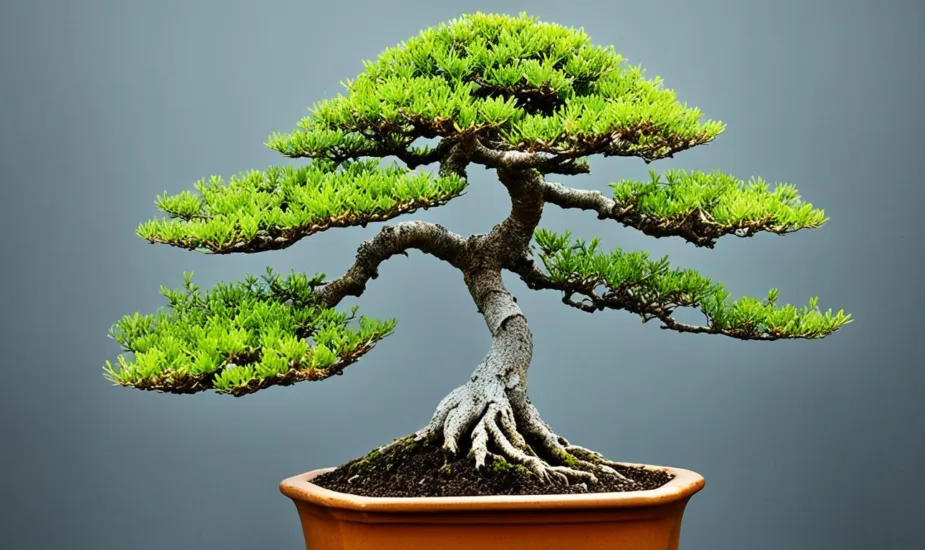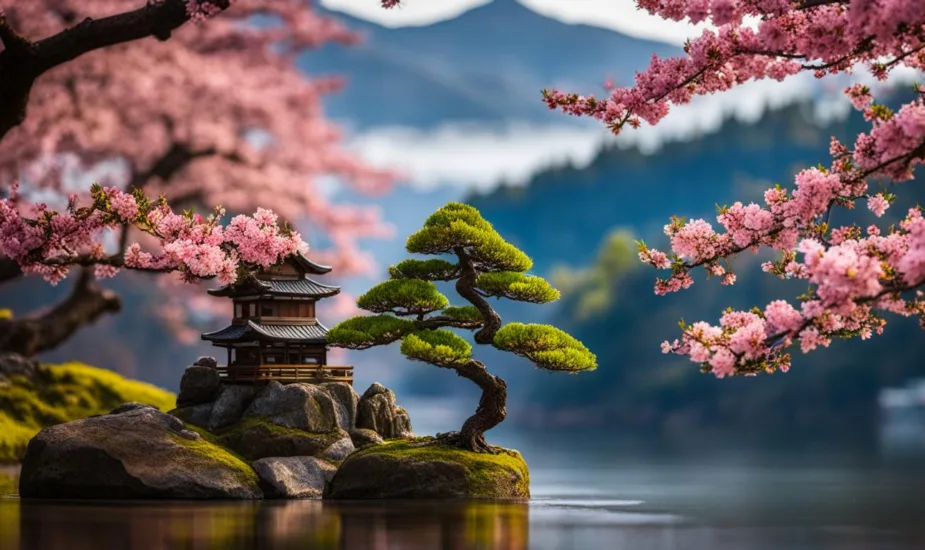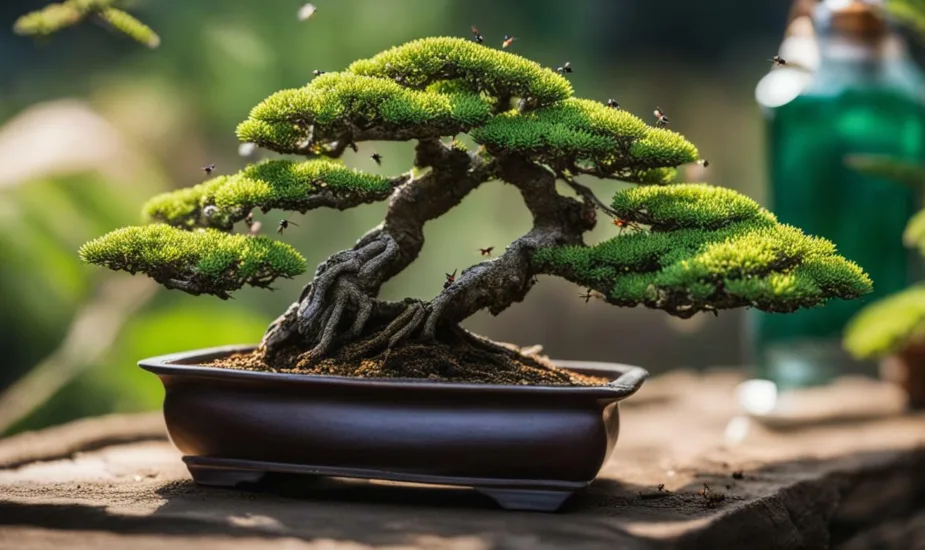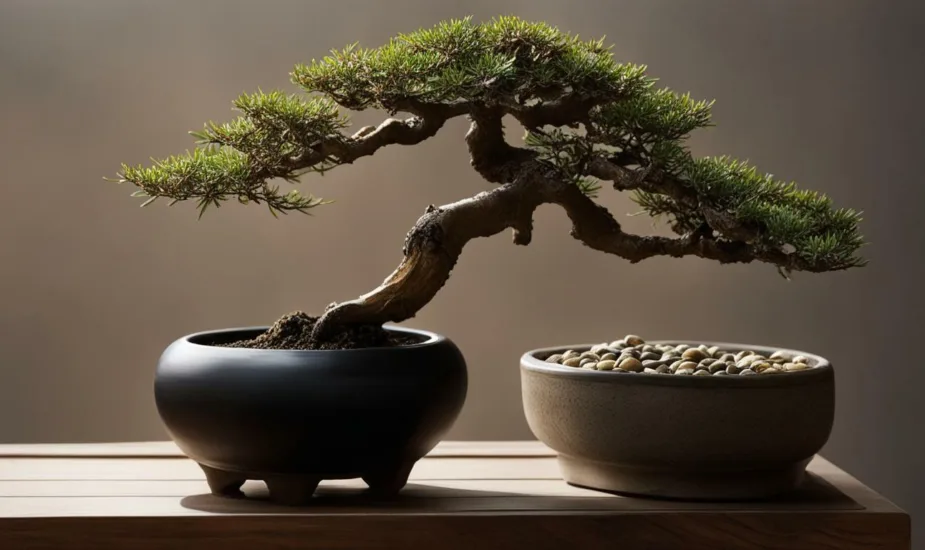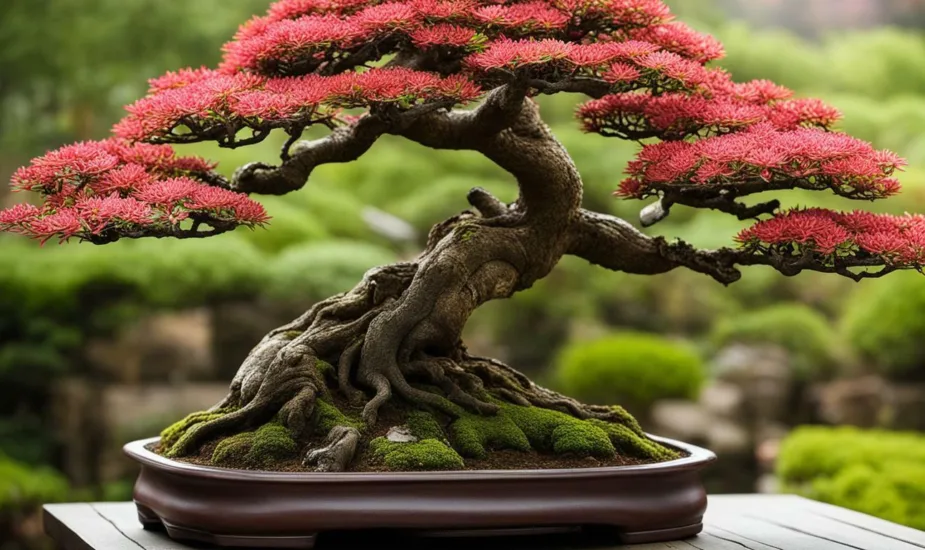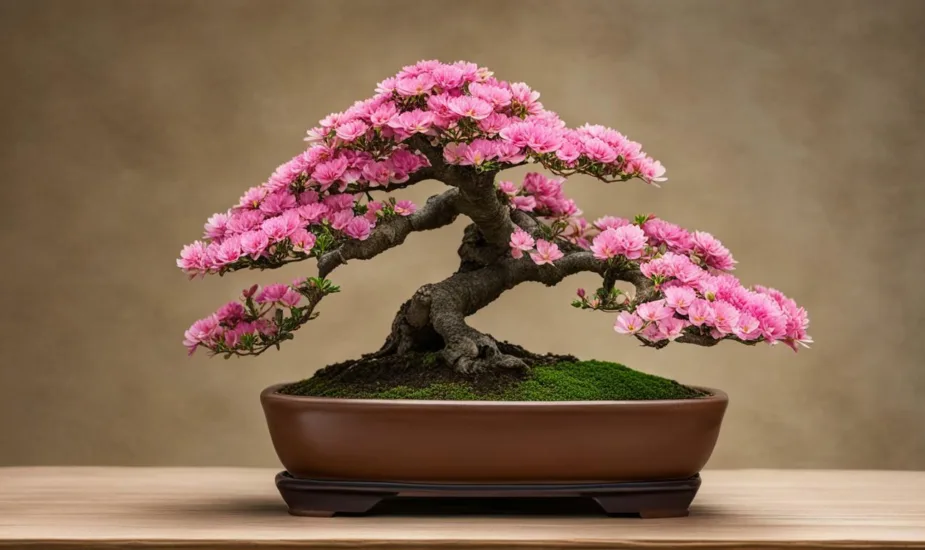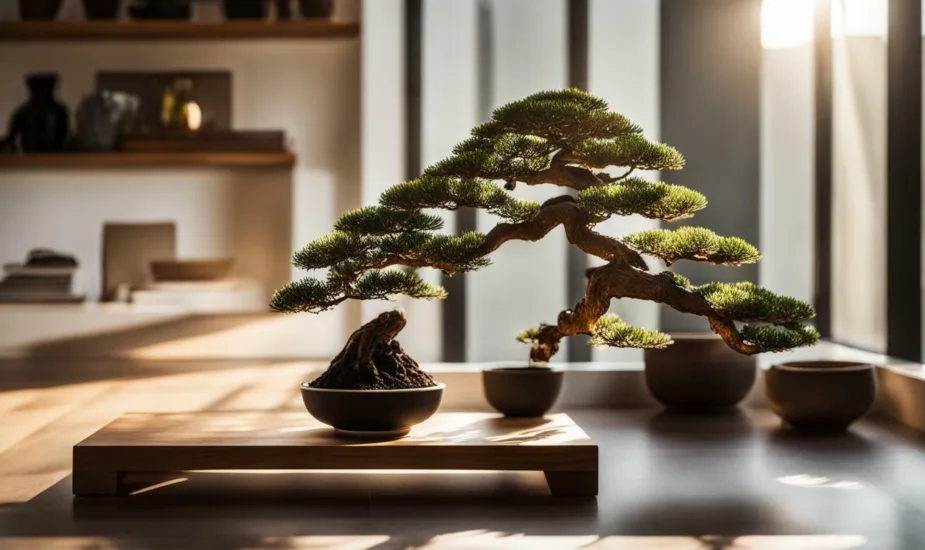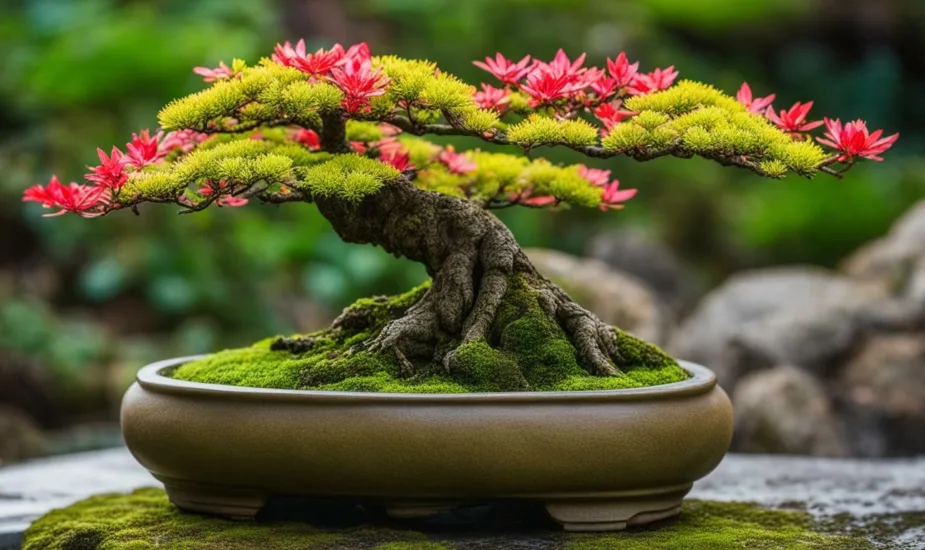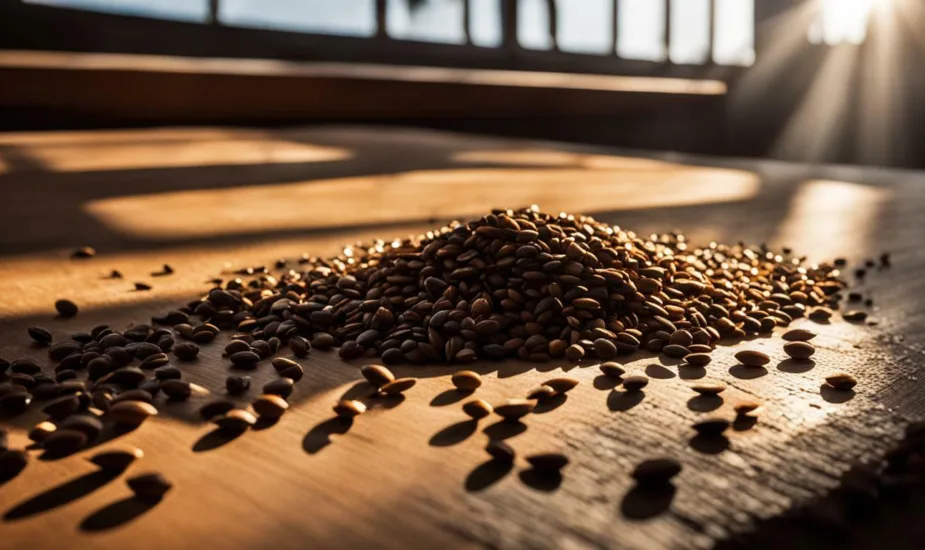Unveiling the Best Bonsai Tree for Beginners – A Comprehensive Guide
Are you a beginner looking to start your bonsai journey? Discover the best bonsai tree options for beginners in this comprehensive guide. When it comes to choosing the perfect bonsai tree for newcomers, it's important to consider factors such as ease of care, adaptability to different environments, and personal preferences.

In this guide, I will provide an overview of the top choices for beginners and offer valuable tips on cultivating and maintaining these exquisite miniature trees.
One of the most popular choices for beginners is the Juniper bonsai. Known for its easy care and adaptability, the Juniper comes in various varieties, including those with scale-like leaves and needle-like leaves. This versatile tree can thrive in different climates and is a great option for those starting their bonsai journey.
In addition to Juniper, other bonsai tree options for beginners include Ficus, Chinese Elm, Jade, and Japanese Maple. Each of these trees has its own unique characteristics and care requirements. By providing proper positioning, watering, feeding, pruning, wiring, and repotting, beginners can successfully cultivate and maintain these beautiful miniature trees.
Choosing a bonsai tree that is well-suited to your climate and aligns with your preferences in terms of growth rate and shape is crucial. Additionally, selecting the right pot and soil is essential for the health and growth of the bonsai tree. With patience, attention, and the guidance of comprehensive care guides and books, beginners can embark on a fulfilling journey into the world of bonsai cultivation.
Stay tuned for the upcoming sections of this comprehensive guide, where we will delve into the specifics of each bonsai tree option, explore essential care tips, and provide guidance on choosing the right pot and soil. By the end of this guide, you’ll have all the knowledge you need to choose the perfect bonsai tree for your beginner’s journey.
Understanding Different Bonsai Species for Beginners
To make an informed choice, let’s explore some of the best bonsai species that are ideal for beginners. When it comes to choosing the right bonsai tree, it’s important to consider factors such as ease of care, adaptability, and personal preferences. Here are some beginner-friendly bonsai tree varieties to consider:
- Juniper Bonsai: The Juniper bonsai is a popular choice for beginners due to its easy care and adaptability to different environments. It comes in various varieties, including those with scale-like leaves and needle-like leaves. The Juniper bonsai requires minimal maintenance and can thrive both indoors and outdoors.
- Ficus Bonsai: Another beginner-friendly option is the Ficus bonsai. This tree is known for its glossy leaves and aerial roots, which add to its visual appeal. The Ficus bonsai is relatively easy to care for and can tolerate a range of lighting conditions.
- Chinese Elm Bonsai: The Chinese Elm bonsai is a favorite among beginners. It is a hardy tree that can withstand varying temperatures and environments. With its delicate, serrated leaves and graceful branches, the Chinese Elm bonsai creates an elegant and serene aesthetic.
- Jade Bonsai: If you’re looking for a bonsai tree with a unique appearance, the Jade bonsai is an excellent choice. Known for its thick, fleshy leaves and sturdy trunk, the Jade bonsai is a resilient plant that requires minimal watering and maintenance.
- Japanese Maple Bonsai: The Japanese Maple bonsai is prized for its striking foliage, which transforms into vibrant hues of red, orange, and yellow during the autumn season. While it requires more attention and care compared to other species, the beauty of the Japanese Maple bonsai makes it a rewarding choice for bonsai enthusiasts.
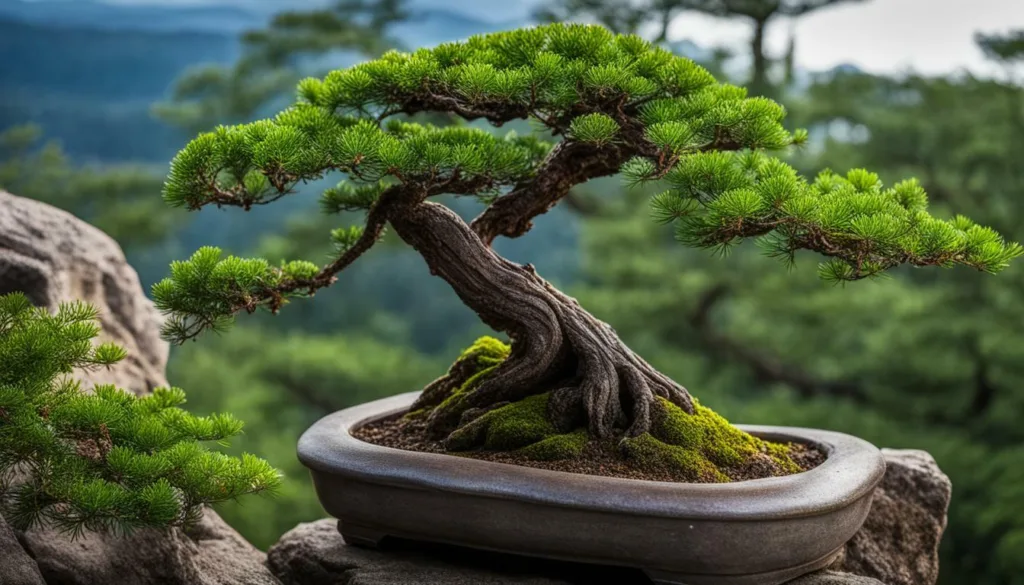
Each bonsai species mentioned above has its own specific care requirements, so it’s essential to research and understand their needs before bringing them into your home or garden. By providing the proper care, including correct positioning, watering, feeding, pruning, wiring, and repotting, beginners can successfully cultivate and maintain these beautiful miniature trees.
When selecting a bonsai species, consider your local climate, as different species have varying temperature and humidity preferences. Additionally, choose a species that aligns with your personal preferences in terms of growth rate and shape.
Remember, patience is key when it comes to bonsai cultivation. Seeking guidance from comprehensive care guides and books can provide valuable insights and knowledge to help you on your bonsai journey. With dedication and attention, beginners can create a harmonious bond with their bonsai trees and enjoy the rewards of their efforts.
The Juniper Bonsai – A Popular Choice for Beginners
Among the top choices for beginners, the Juniper bonsai stands out for its easy care and adaptability to various environments. This beautiful miniature tree comes in different varieties, some with scale-like leaves and others with needle-like leaves, offering a range of options for bonsai enthusiasts.
One of the reasons the Juniper bonsai is favored by beginners is its low maintenance requirements. It thrives in a wide range of conditions and is tolerant of occasional neglect. This makes it an ideal choice for those who are new to bonsai cultivation and may still be honing their skills. With proper care, the Juniper bonsai can bring years of beauty and enjoyment.
To care for a Juniper bonsai, it is important to provide the right amount of sunlight, water, and nutrients. These trees prefer bright, indirect light, so placing them near a window or in a well-lit room is ideal. Watering should be done when the soil feels slightly dry, avoiding overwatering which can lead to root rot. Additionally, fertilizing the bonsai during the growing season helps to promote healthy growth.
Trimming and shaping the Juniper bonsai is also crucial for maintaining its aesthetic appeal. Regular pruning helps to encourage branching and maintain the desired shape of the tree. Wiring can be used to further refine the shape and create unique designs. Repotting should be done every few years to provide fresh soil and prevent the tree from becoming root-bound.
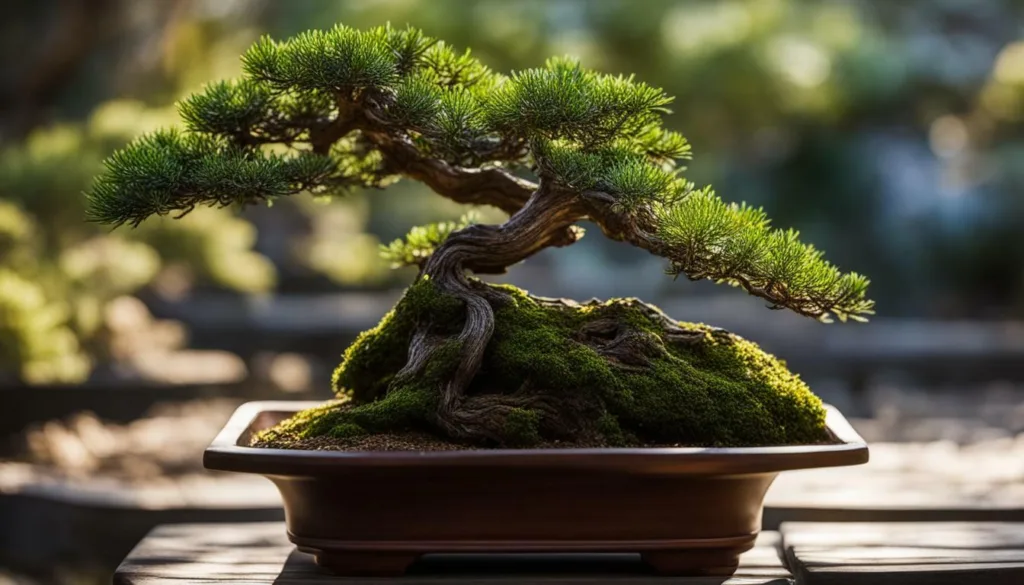
In conclusion, the Juniper bonsai is an excellent choice for beginners due to its easy care and adaptability to different environments. With proper positioning, watering, feeding, pruning, wiring, and repotting, beginners can successfully cultivate and maintain these beautiful miniature trees. By choosing a bonsai species that suits their preferences and climate, beginners can embark on a fulfilling journey into the world of bonsai cultivation. Remember to be patient, attentive, and consult comprehensive care guides and books for guidance along the way.
Apart from the Juniper, there are several other bonsai tree species that offer a beginner-friendly experience, such as the Ficus, Chinese Elm, Jade, and Japanese Maple. Each of these trees has its own unique characteristics and care requirements, making them suitable choices for those new to bonsai cultivation.
The Ficus bonsai, also known as the Fig tree, is a popular option due to its adaptability and resilience. It thrives in both indoor and outdoor environments, making it a versatile choice for beginners. The Ficus bonsai requires regular watering and prefers bright, indirect sunlight. With proper care, it can grow into a stunning tree with aerial roots and glossy foliage.
The Chinese Elm bonsai is another excellent option for beginners. It is well-loved for its elegant, twiggy structure and small, serrated leaves. This bonsai tree flourishes in mild to warm climates and prefers a well-draining soil mix. The Chinese Elm bonsai requires pruning and shaping to maintain its desired form, but with patience and attention, it can develop into a beautiful miniature representation of its larger counterpart.
Jade bonsai, also known as the Crassula bonsai, is a resilient and visually appealing choice. It features thick, fleshy leaves and a sturdy trunk, giving it a distinct appearance. The Jade bonsai prefers bright light and infrequent watering, as it stores water in its leaves. With its captivating and unique aesthetic, the Jade bonsai is a great addition to any beginner’s collection.

Lastly, the Japanese Maple bonsai is an exquisite option for beginners seeking a touch of elegance. Its delicate, palmate leaves create a stunning display of color, ranging from vibrant green in spring and summer to fiery red and orange in the fall. The Japanese Maple bonsai requires partial shade and regular watering to maintain its health and beauty. With its graceful branches and captivating foliage, it is sure to be a centerpiece in any bonsai collection.
| Bonsai Tree Species | Characteristics | Care Requirements |
|---|---|---|
| Ficus | Versatile, resilient, aerial roots | Regular watering, indirect sunlight |
| Chinese Elm | Elegant, twiggy structure, small serrated leaves | Mild to warm climates, well-draining soil mix |
| Jade | Thick, fleshy leaves, sturdy trunk | Bright light, infrequent watering |
| Japanese Maple | Delicate, palmate leaves, vibrant colors | Partial shade, regular watering |
Summary
When it comes to choosing bonsai trees for beginners, there are various options to consider. The Ficus, Chinese Elm, Jade, and Japanese Maple bonsai trees all offer unique beauty and manageable care requirements. By selecting a tree that suits your climate and personal preferences, and providing proper care through positioning, watering, feeding, pruning, wiring, and repotting, beginners can successfully cultivate and maintain these captivating miniature trees. Remember, patience and attention, along with guidance from comprehensive care guides and books, will ensure a rewarding bonsai journey.
Essential Care Tips for Beginner Bonsai Enthusiasts
To help your bonsai thrive, it’s important to understand essential care techniques, including proper positioning, watering, feeding, pruning, wiring, and repotting. Each of these aspects plays a crucial role in maintaining the health and beauty of your miniature tree.
Proper positioning: Bonsai trees require ample sunlight to flourish. Place your bonsai in a location where it will receive at least six hours of direct sunlight each day. Avoid exposing it to extreme temperature changes or drafts, as this can stress the tree.
When it comes to watering, the key is to find the right balance. Overwatering can lead to root rot, while underwatering can cause the tree to dry out. Check the moisture level of the soil regularly by sticking your finger about an inch deep. If it feels dry, it’s time to water. Use a gentle spray or watering can to ensure even moisture distribution.
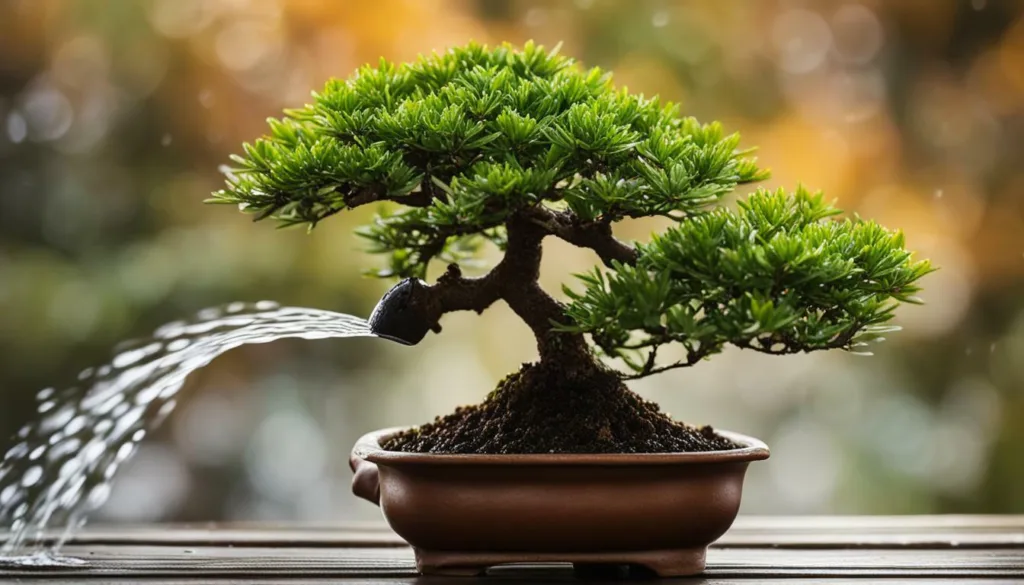
Feeding: Bonsai trees require regular feeding to replenish nutrients. Use a specialized bonsai fertilizer and follow the instructions on the packaging for the recommended feeding schedule. This will help promote healthy growth and vibrant foliage.
Pruning: Regular pruning is essential for maintaining the desired shape and size of your bonsai tree. Remove any dead, damaged, or overgrown branches using a clean and sharp pair of bonsai shears. This will enhance the tree’s overall appearance and encourage new growth.
Wiring: Wiring is a technique used to guide the branches of a bonsai tree into the desired shape. Carefully wrap the wire around the branches, taking care not to apply too much pressure. Monitor the tree closely to ensure the wires do not cut into the bark, as this can damage the tree.
Repotting: Repotting your bonsai tree is necessary every couple of years to prevent root binding and replenish the soil’s nutrients. Repot during the tree’s dormant period, typically in early spring. Choose a pot that allows for proper root growth and use a well-draining bonsai soil mix.
| Care Technique | Tips |
|---|---|
| Proper Positioning | Ensure at least six hours of direct sunlight daily, avoid extreme temperature changes and drafts |
| Watering | Check soil moisture regularly, water when the soil feels dry about an inch deep |
| Feeding | Use a specialized bonsai fertilizer, follow recommended feeding schedule |
| Pruning | Remove dead, damaged, or overgrown branches using clean and sharp bonsai shears |
| Wiring | Carefully wire branches to guide shape, monitor for wire cutting into the bark |
| Repotting | Repot every couple of years using a well-draining bonsai soil mix |
Remember, caring for bonsai trees requires patience and attention.
By understanding these essential care techniques and applying them diligently, you can create a thriving environment for your bonsai tree. It’s also beneficial to seek guidance from comprehensive care guides and books, which can provide valuable insights and knowledge to support your bonsai journey.
Choosing the Right Pot and Soil for Your Bonsai
The right pot and soil are crucial factors in maintaining the health and vitality of your bonsai tree. When it comes to selecting a pot, it’s important to choose one that suits the size and style of your bonsai. The pot should have adequate drainage holes to prevent waterlogging and promote proper airflow to the roots. Additionally, consider the material of the pot – ceramic or clay pots are popular choices as they provide good insulation and stability for the tree.
Equally important is the choice of soil for your bonsai. Bonsai trees thrive in well-draining soil that allows the roots to breathe. A commonly used bonsai soil mix consists of a blend of akadama, pumice, and lava rock. Akadama is a type of clay soil that retains moisture while providing good drainage. Pumice and lava rock help to improve aeration and prevent compaction.
It’s essential to regularly check the moisture level of the soil to ensure proper hydration for your bonsai. Watering frequency may vary depending on factors such as climate, tree species, and pot size. Remember, overwatering can lead to root rot, while underwatering can cause wilting and dehydration.
Investing in a moisture meter can be a useful tool to accurately monitor the moisture content of your bonsai’s soil. This will help you determine the appropriate watering schedule and ensure the health of your tree. Additionally, consider using a humidity tray or misting the foliage to create a more favorable microclimate for your bonsai.
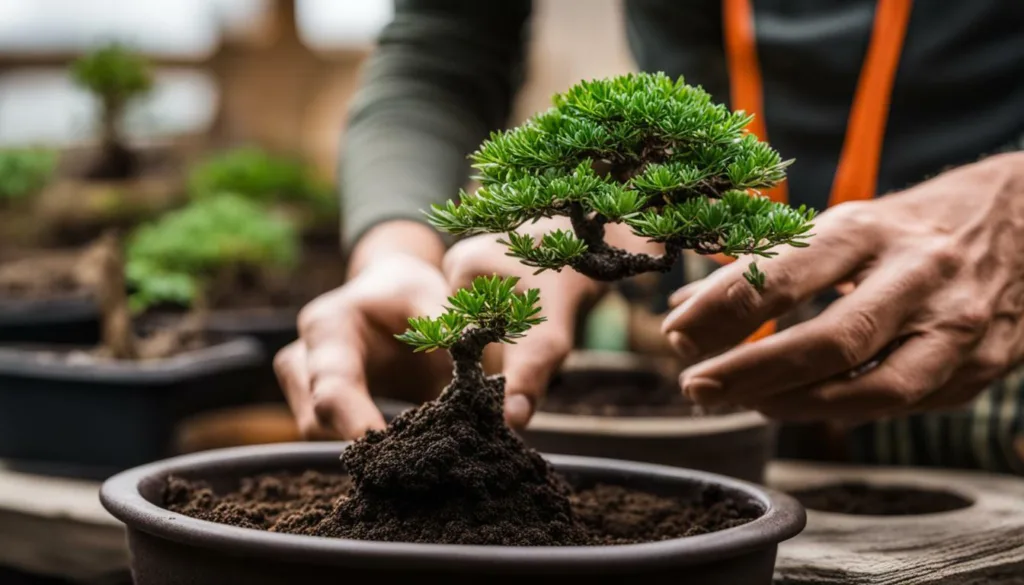
| Pot Selection Considerations | Soil Selection Considerations |
|---|---|
| Choose a pot that suits the size and style of your bonsai | Select a well-draining soil mix consisting of akadama, pumice, and lava rock |
| Ensure the pot has adequate drainage holes and is made of ceramic or clay | Regularly check the moisture level of the soil and adjust watering accordingly |
| Consider the stability and insulation properties of the pot material | Use a moisture meter to accurately monitor soil moisture |
| Create a favorable microclimate through the use of humidity trays or misting |
Patience and Guidance for a Successful Bonsai Journey
Cultivating bonsai trees requires patience, attention, and the guidance of comprehensive care guides and books to ensure a successful journey. The art of bonsai is a practice that demands time and dedication, as these miniature trees require meticulous care and nurturing. Patience is key, as bonsai trees grow slowly, and it takes time for them to reach their desired form and aesthetic appeal.
When starting your bonsai journey, it’s important to educate yourself with comprehensive care guides and books. These resources provide valuable insights into the specific needs of different bonsai species, offering guidance on watering, feeding, pruning, and wiring techniques. They also cover important topics such as positioning, repotting, and soil selection, which are vital for the health and vitality of your bonsai tree.
Patience is not only required for the growth and development of the bonsai tree but also for the learning process. As a beginner, it’s important to embrace the art of bonsai with an open mind and a willingness to learn from your experiences. Mistakes are inevitable, but they provide valuable lessons that will contribute to your growth as a bonsai enthusiast.

As you embark on your bonsai journey, it’s essential to cultivate a sense of attention to detail. Bonsai trees require regular monitoring to ensure they are thriving in their environment. This includes observing their growth patterns, checking for signs of pests or diseases, and making necessary adjustments to their care routine. Attention to detail is crucial for maintaining the health and vitality of your bonsai tree.
In conclusion, patience, attention, and the guidance of comprehensive care guides and books are essential for a successful bonsai journey. With these qualities, beginners can cultivate and maintain beautiful bonsai trees that bring joy and tranquility to their lives. Remember, the art of bonsai is not only about creating stunning miniature trees but also about nurturing a deeper connection with nature and finding peace in the process.
Conclusion
Choosing the best bonsai tree for beginners is an exciting endeavor that requires careful consideration, but with the right knowledge and proper care, you can embark on a fulfilling bonsai journey.
When it comes to selecting a bonsai tree as a beginner, the Juniper bonsai is a popular choice. Its easy care and adaptability to different environments make it an ideal option. Juniper bonsai trees come in various varieties, featuring scale-like leaves or needle-like leaves, offering a range of aesthetic possibilities.
For those looking for alternative options, Ficus, Chinese Elm, Jade, and Japanese Maple bonsai trees are also suitable for beginners. Each tree has its own unique care requirements, but by mastering the fundamentals of positioning, watering, feeding, pruning, wiring, and repotting, beginners can successfully cultivate and maintain these beautiful miniature trees.
It is vital to choose a bonsai tree that is well-suited to your climate and one that aligns with your personal preferences in terms of growth rate and shape. Additionally, selecting the right pot and soil is crucial for the overall health and vitality of your bonsai tree.
Embarking on a bonsai journey as a beginner requires patience, attention, and the guidance of comprehensive care guides and books. These resources provide valuable insights and knowledge that can support your journey towards becoming a skilled bonsai enthusiast. With dedication and proper care, you can establish a strong foundation for a rewarding bonsai cultivation experience.
FAQ
Q: What is the best bonsai tree for beginners?
A: The Juniper bonsai is a popular choice for beginners due to its easy care and adaptability to different environments. Other options include Ficus, Chinese Elm, Jade, and Japanese Maple.
Q: What are the care requirements for bonsai trees?
A: Bonsai trees require proper positioning, watering, feeding, pruning, wiring, and repotting. Each tree species has its own specific care needs, so it’s important to consult comprehensive care guides and books for detailed instructions.
Q: How do I choose the right pot and soil for my bonsai?
A: It’s important to choose a pot that is well-suited to the size and shape of your bonsai tree. The pot should have good drainage and be made of a suitable material. The soil should be well-draining to ensure the health of the bonsai tree.
Q: Where can I find comprehensive care guides and books for bonsai cultivation?
A: Comprehensive care guides and books can be found at local gardening stores, online retailers, and libraries. It’s important to choose reputable sources that provide detailed information and guidance for beginners.
Q: What is the key to success in bonsai cultivation?
A: Patience and attention are crucial for success in bonsai cultivation. It’s important to carefully observe and care for the tree, following the recommended care guidelines. With time, practice, and guidance, beginners can embark on a fulfilling bonsai journey.
 Little Garden Tips
Little Garden Tips




